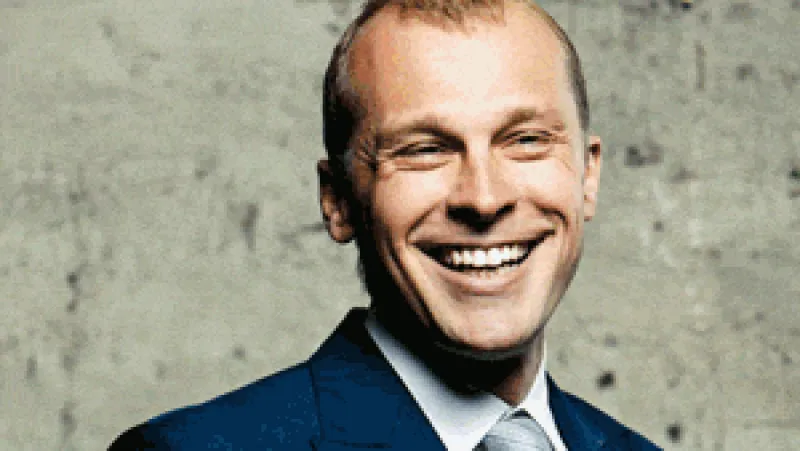| Related Content The 2013 All-Europe Sales Team The 2013 All-Europe Trading Team Europe's Top Corporate Access Providers 2013 |
“We are back to company-specific analysis, which is good news for bottom-up research like ours,” declares Vincent Laurencin, head of research at Exane BNP Paribas in London. “Picking winning business models at a reasonable valuation is difficult but possible. Predicting politics is not.”
Adds Mark Iannotti, head of research for Europe, the Middle East and Africa at Bank of America Merrill Lynch in London: “Clients are asking for our views on sectors and countries, and we have become more focused on individual stocks.”
| New European Equity Research Winners: Highlights | ||

| 
| 
|

| 
| 
|
“There is definitely greater optimism that European equities are beginning to be looked at as an attractive proposition again,” agrees London-based Kenneth Lee, deputy head of European equity research at Barclays. “As we move out of a period when correlation of risk assets has been close to one and macro stresses have been to the fore, investors are likely to turn their attention back to stock picking.”
And to whom will they look for guidance? Institutional ¬Investor asked money managers to indicate which analyst teams provide the best insights into European equities, and for a third year running, Deutsche Bank leads the lineup of the All-Europe Research Team — but by a much narrower margin over second-place UBS than in 2012. The German bank captures 38 team positions, down from 44, while its Swiss rival adds three spots, for a total of 33.
BofA Merrill, which shared the second tier with UBS last year, slips to third after losing three positions. Morgan Stanley holds steady in fourth place despite increasing its team total from 24 to 26, and J.P. Morgan Cazenove — which tied with Morgan Stanley last year — dips to the No. 5 spot even though its total rises by one.
The photographs on the preceding pages feature some of the team leaders who are new to the No. 1 spot this year; the full list of top-ranked crews in each of the survey’s 49 sectors appears in the table on page 30. Deeper data, including profiles of the teams in first, second and third places, can be found on II’s website, institutionalinvestor.com. Survey results reflect the opinions of nearly 2,150 money managers at more than 760 institutions managing an estimated $5.6 trillion in European equities, or roughly 83 percent of the MSCI Europe index’s market cap of $6.8 trillion at the time of polling.
The turning point in many investors’ attitudes about euro zone risk appears to have been last September’s introduction of Outright Monetary Transactions, a program through which the European Central Bank would buy sovereign bonds of member countries. “Any doubts that the euro will remain a viable currency have now been dissipated,” proclaims Deutsche’s Smith. “That has allowed investors to pay greater attention to bottom-up fundamentals, which have driven a greater dispersion in stock prices and hence the ability to generate outperformance.”
Not that portfolio managers are making massive asset allocation changes yet. “If you look at cumulative fund flows since the start of the credit crisis, it is clear that investors have overwhelmingly favored bonds over stocks,” Exane’s Laurencin points out. “But we think that sentiment is changing, and at some point the rebalancing from cash and bonds back into equities will happen.”
Mark Stockdale, head of European securities research at UBS in London, concurs. “There is more discussion that overall value now lies more in equities,” he says. “Although we do not expect a ‘great rotation’ to occur, there may be a ‘mini rotation’ where retail investors, some institutions and even corporates move out of fixed income into equities.”
Mislav Matejka, whose J.P. Morgan Cazenove team catapults from runner-up to first place in Equity Strategy, believes that the OMT program will prove to be a game changer. Last year “global investors found much of Europe uninvestable, as they were concerned over huge tail risk and the breakdown of the euro zone,” the London-based strategist says. “The ECB has since decided to support peripheral bonds under the pretext of reducing convertibility risk, and we are seeing a big increase in the appetite for European assets again.”
The Cazenove crew is bullish on stocks in such periphery countries as Italy and Spain. “The euro has a risk of appreciating significantly, which we think could hurt big exporters like Germany, so our theme for 2013 is to get out of exporters and buy domestic plays in Europe,” he explains. The analysts also like the financial sectors, which they believe will beat the broad market this year. “Banks are the best play on the improvement in the credit markets, because they can fund more cheaply,” Matejka asserts. “They are also the best leveraged play on the change in the ECB’s behavior.”
Another sector poised to outperform is high-end retail, thanks to improving financial conditions in Europe along with economic stimulus plans in Japan and the U.S., according to Thomas Chauvet, who pilots Citi’s team from second place to first in Luxury Goods. “The recent political leadership change in China is also driving hopes of significant reforms aimed at rebalancing the economy from investment to consumption,” he says. However, “investing in luxury is no longer a uniform, China-centric sector call,” adds Chauvet, who is headquartered in London. “Stock selection is increasingly important.” The same can be said about Oil & Gas Exploration & Production — but for different reasons, observes Jonathon Rigby, captain of the UBS squad that rockets from runner-up to first place. Oil price ranges, in general, will remain about the same as last year’s, he predicts, but refining margins will deteriorate. “We really don’t see a macro¬economic tailwind for the sector even when global economic conditions begin to improve,” Rigby says. “The global nature of the industry means that it is less directly leveraged to improved sentiment around Europe, and consequently it is difficult to see why the sector will outperform.”
So the UBS team is urging investors to look for bottom-up stories in the sector. “These become quite crowded trades, however, with perceived catalysts often prompting selling if they don’t play out exactly as investors hope,” the London-based team leader explains. “On the fundamental level companies have been adding large capital investments, which means that free cash flow is significantly less than one might initially assume when one looks at the economic conditions for the sector.”
Paper is another industry under pressure. “Domestic demand for printing and writing paper went down about 6 percent in 2012, and because of negative pricing trends it should see similar numbers this year,” believes Lars Kjellberg, who shepherds the Credit Suisse team from No. 3 to No. 1 in Paper & Packaging. But the decline has little to do with macro concerns; rather, it’s largely attributable to increased use of technology. “The electronic side of media has had a negative correlation for paper and printing.”
That doesn’t mean the sector is without opportunities. Rising demand for packaging has spurred price hikes — and should continue to do so — despite the euro zone’s anemic economic growth. “Earnings are holding up strongly,” notes Kjellberg, who is based in Stockholm. His team advises caution on paper producers but is bullish on packagers.
A similar bifurcation can be found in technology. Morgan Stanley’s François Meunier, who helms the teams that claim first place in Technology/Semiconductors and second in Telecommunications Equipment, points out that, thanks to growing demand for smartphones and tablets, semiconductor manufacturers have done well, for the most part: These companies beat the broad market by 18.4 percentage points in 2012. But telecom equipment makers fared poorly, owing to increased competition and margin pressures: These outfits trailed the market by 26 percentage points last year.
This pattern should continue through 2013, the London-based crew captain says, while cautioning that because the European tech sector is a net exporter, a stronger euro will likely translate into headwinds for market shares and earnings.
Foreign exchange rates aren’t the only factors that affect Europe-based companies with global customer bases, according to Paul Roger, who guides the Exane team up one notch to first place in Building & Construction. Identifying themes in certain regions that the market may not have priced in and that can drive earnings surprises is key, he says.
“We see the biggest scope for upward revisions for stocks with ambitious self-help plans and exposure to markets where price and cost trends are improving by more than the consensus expects,” Roger adds, citing growing demand for asphalt and insulation in the U.S. and for cement in Latin America. “We are more cautious on the European names that operate in the Middle East and Africa, where we think cost pressures are high and pricing power relatively weak.” He and his London-based team believe that as macro concerns recede and markets return to some level of stability, “the correlation between valuation multiples and metrics [across stocks] will decrease, as investors start to look longer term.” In consequence, “the market is likely to rerate those stocks with a superior growth profile and the potential for margins to return to precrisis levels,” Roger predicts.
Some money managers have already begun positioning their portfolios for that eventuality by raising their equity weightings, according to Jonathan Jayarajan, Deutsche’s associate director of EMEA equity research; other investors are waiting for signs of sustained performance before making a move.
“The 8,000 level for the DAX has often been mentioned as a trigger point,” says Jayarajan, who is based in London. “Encouragingly, U.S. and U.K. bond yields are now back above 2 percent, and we have seen our clients reporting inflows to developed-markets equity funds. If these trends continue, then the ‘great rotation’ could truly be under way.” • •






